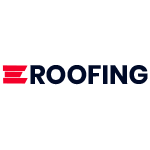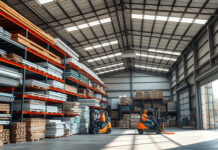Is your home starting to show its age? If those charming creaks and vintage vibes come with a leaky roof or drafty attic, it might be time for a roofing check-up.
But here’s the good news: with proper maintenance, your roof doesn’t have to face a costly full replacement. In our guide on roofing considerations and upgrades for ageing homes, we’ll show you how to extend the life of your roof through smart upkeep and timely upgrades.
Whether you’re sealing minor leaks, improving insulation, or selecting durable materials, we’ve got you covered. Are you ready to preserve your home’s integrity and charm without breaking the bank?
Let’s explore the best strategies to keep your roof—and your home—in top shape for years to come!
What’s going on with your roof?
Most people will notice when their windows let in draughts or holes start appearing in exterior brickwork, but roofs are often out of sight—which means they’re also out of mind.
Your roof might seem perfectly functional, but specific signs can highlight whether it’s falling victim to ageing. They include:
- Damaged Components: Damaged shingles, missing tiles, uneven areas and water pools are all signs that your roof isn’t working correctly. Performing regular inspections ensures you keep track of any changes.
- The Materials: All roof materials have lifespans, but some last longer than others. Generally, asphalt has a lifespan of up to 30 years, while metal roofs exceed 50 years. If your home is older, the roof materials might decrease in performance.
- Location: Properties in areas prone to extreme weather are more likely to experience roof issues. For example, Northern England has more rain, wind and snow than Southern England.
- Structural Issues: Older homes will also develop structural issues over time, impacting your roof’s stability.
Things to consider when upgrading your roof
Upgrading your roof can ensure years of stress-free living space without leaks or sagging. Before buying roofing materials and consulting a professional service, consider the following factors.
Safety
All roofs should be structurally safe, and taking the following steps can ensure your roof serves its intended purpose:
- Materials: Choose materials that suit your property’s architectural style and won’t cause excess weight. For example, some materials might be too heavy for older homes, leading to sagging and structural damage.
- Lead Flashing: Roofs should be watertight and able to prevent even tiny droplets from entering the building. Installing lead flashing will reduce the risks of water damage, keeping your property safe.
- Remove Obstructions: Any obstructions around the roof should also be cleared. For example, trees near the building might damage the roof, resulting in broken tiles.
History
The UK has plenty of historic properties, and each one comes with unique restrictions. If you live in a listed building, you’ll need to contact your local authority to see which upgrades you can make.
For example, a listed building might only be able to use certain roofing materials that match its architectural style and age.
Energy efficiency
Even if older roofs appear structurally stable, they might lack energy-efficient features. Upgrading the materials and addressing any issues can decrease your energy bills. Here are some steps you can take when upgrading the roof:
- Use Newer Materials: Technology means property owners have more access to sustainable materials. Asphalt used to lack efficiency, but advances mean you can find cool-coloured granules.
- Reflective Coating: Applying a reflective coating to your roof can maintain consistent temperatures by reflecting sunlight.
- Attic Ventilation: Hot air rises, so your central heating will enter the roof area. A lack of insulation won’t trap the heat, so you’ll spend more on your energy bills. Installing insulation is one of the most effective ways to promote energy efficiency.
- Solar Panels: Installing solar panels requires an initial investment, but the trade-off is the ability to generate your own electricity. Households can save hundreds each year and also export their energy back to the grid through the Smart Export Guarantee.
Preserving your roof
When you install a new roof or upgrade your current structure, you’ll want to ensure it lasts for years to come. Choosing durable materials and ensuring energy efficiency are integral to longevity.
Following these tips maximises your investment and preserves the property’s value.
Don’t forget the little details
It’s easy to get lost in choosing the right materials and focusing on aesthetic appeal, but the small things make the biggest difference. Underlayment is vital because it adds a layer of protection against water and excess moisture.
When installing lead flashing, focus on vulnerable areas such as vents, chimneys, skylights and roof windows.
Take extra precautions
Gutter systems are often overlooked, but they perform a vital function—especially for homes in locations that see a lot of rainfall. Your guttering system should be able to divert water from the building, but blockages or faults will increase the risks of water damage.
Properties in cold climates should also install ice shields, which protect the roof from ice dams and water pools.
Perform regular inspections
Making sure your roof continues to function can prevent expensive repairs. Regular inspections are the best way to assess for problems and identify minor issues before they worsen.
Unfortunately, many homeowners don’t perform inspections, so they don’t know what’s going on with the roof. Investing in an annual inspection from a professional service is a convenient way to look for problems.
Ongoing maintenance
Cleaning out the gutters and maintaining trees ensures that your roof continues to function properly and is not damaged.
Maintenance doesn’t have to take long, but checking for pests and conducting visual inspections enables you to isolate faults before they worsen. It can also save money on expensive repairs and bridge the gap between professional inspections.
The bottom line
Upgrading an ageing home gives it a new lease of life while also future-proofing it for years to come. Technological advances also mean you can replace older materials with modern versions while maintaining your home’s unique character and aesthetic appeal.
If you’re looking for high-grade roofing materials, ERoofing has a range of affordable options that will last for years. We take our responsibility as a supplier seriously and go out of our way to provide each customer with unparalleled quality.
Shop today, or contact our friendly team with any questions. We’re always happy to help.





